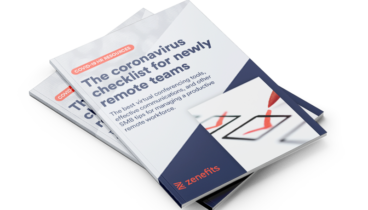Supplemental unemployment benefits (SUB) are offered by employers to bridge the gap between lost wages and state unemployment coverage.

Here's what you need to know:
-
SUB plans work by filling the gap between the discharged employee’s state unemployment compensation and their regular wages prior to the separation
-
The discharged employee must be unemployed and eligible for state unemployment benefits in order to receive payments through a SUB plan
-
In some states, employers cannot implement a SUB plan without pre-approval from the state unemployment compensation agency
-
SUB plan payments are not exempt from federal or state income tax withholding, but both the employer and the discharged employee save on payroll taxes
-
SUB plans can be cumbersome to administer. Thus, it may be best to hand over the administrative reins to a third party that specializes in this benefit
Supplemental unemployment benefits (SUB) are benefits that employers can choose to pay to terminated and furloughed workers. They provide an alternative to severance pay, giving out-of-work employees additional income. SUB plans offer several advantages to both employers and employees.
Every month in the U.S., approximately 1.5 million layoffs and discharges occur.¹ Despite employee terminations being so common, many people don’t know about supplemental unemployment benefits plans. Human resource professionals working for companies that do not currently offer SUB plans to employees may want to take a closer look.
Here we’ll explain what supplemental employment benefits are and examine their advantages and disadvantages for both employers and terminated employees.
What is a supplemental unemployment benefit (SUB) plan?
A supplemental unemployment benefit plan is a cost-cutting alternative to providing severance pay to employees who have been involuntarily terminated. SUB plans work by paying the difference between their state unemployment benefits and their former wages. This provides them with a total income equal to what they were earning while they were working.
Normally, in many states, employees are not allowed to receive supplemental wages while they are receiving unemployment benefits. However, the IRS classifies SUB payments as “benefits” rather than as “wages.” This allows employees to receive SUB payments and unemployment benefits at the same time.
Generally, to receive SUB payments, the discharged employee must be unemployed and eligible for state unemployment benefits. Their termination must have been for reasons beyond their control. (Or, if they were discharged for cause, they must prove that their termination was illegal.) SUBs are often classified as layoff benefits or furlough benefits. Layoff benefits pertain to employees laid off because their employer discontinued a plant or operation. Extended layoff benefits apply when a temporary layoff is extended or becomes permanent. Furlough benefits are for employees whose working hours were cut because of an employer-generated workforce reduction.
How are supplemental unemployment benefit plans linked to state unemployment benefits?
Employers usually provide SUB plan payments while the discharged employee is receiving state unemployment benefits. However, there is an exception. If the employer chooses, it can extend SUB eligibility to discharged employees who are no longer eligible for state unemployment benefits if they:
- Do not have enough wage credits for state unemployment benefits.
- Have exhausted the length of their state unemployment benefits.
- Do not meet a required waiting period for state unemployment benefits.
Do supplemental unemployment benefit plans have to be approved by the state?
In some states, employers cannot implement an SUB plan without pre-approval from the state unemployment compensation agency. The state may also have other requirements for SUB plans relating to eligibility and payments.
If the state does not require pre-approval, it might encourage employers to submit their SUB plan for it anyway, as lack of approval will cause the payments to be treated like traditional severance. The SUB plan may need to obtain tax-exempt status from the IRS before it can be approved by the state.
What taxes are exempt under a supplemental unemployment benefit plan?
Both the employer and the discharged employee save on payroll taxes, unlike traditional severance, which is taxable.
Payments made through an SUB plan are excluded from Social Security and Medicare taxes, plus federal and state unemployment taxes if the legal requirements are satisfied.
One requirement, according to IRS Revenue Ruling 90-72, is that the SUB plan payments “must be specifically designed to supplement state unemployment benefits.” Further, the employee must meet the requirements necessary to receive state unemployment compensation benefits.
Additionally:
- The SUB plan payments must be made in installments. They cannot be paid in a lump sum.
- The discharged worker must have been involuntarily terminated, typically because of layoffs, plant closures, or reductions in force.
SUB plan payments are not exempt from federal or state income tax withholding.
How are payments made?
Unless the state says otherwise, the employer can make SUB plan payments from its general assets. Alternatively, the employer can establish and pay through a tax-exempt supplemental unemployment benefits trust.
Also, the employer, the employee, or both can fund SUB plans. Employees can fund the plans through individual or collective funds. In an individual fund, employees contribute to accounts from which they will receive their benefits. In a collective fund, multiple employees contribute to the same fund. In the private sector, employers often fund the accounts.
How much does the supplemental unemployment benefits plan pay?
SUB plans pay the difference between the discharged employee’s state unemployment benefits and their regular wages before the layoff. For example, if a discharged employee receives $375 weekly in state unemployment benefits and their weekly pay was $575, the SUB plan would pay the difference of $200 per week.
Summarizing the advantages of supplemental unemployment benefit plans
- Both the employer and the discharged employee save on payroll taxes.
- Employers do not have to come up with a lump sum payment, unlike some traditional severance agreements. By making installment SUB plan payments, the employer can better manage its cash flow, which is especially critical during an economic downturn.
- SUB plans help cushion the blow of a layoff to workers by offering much-needed financial support.
- SUB plans allow furloughed employees to maintain a steady income while waiting to be called back to work. This gives them peace of mind while enabling the employer to retain valuable workers.
- SUB payments do not affect eligibility for or the amount of state unemployment benefits received.
- Similar to traditional severance, employers may give SUB plan payments in exchange for the employee releasing claims against the company. However, this should be done strategically and legally.
Summarizing the disadvantages of supplemental unemployment benefit plans
- If the SUB plan must be submitted to the state or the IRS for pre-approval, this could considerably delay implementation.
- The SUB plan must be carefully designed to ensure the employer and the employee get the most out of the program. This step requires extensive knowledge of how SUB plans work and the related laws and tax implications.
- SUBs are typically more complicated to administer than traditional severance plans, mainly because of their association with state unemployment benefits.
- SUB plan payments are subject to federal income tax withholding and must therefore comply with IRS rules for nonqualified deferred compensation unless an exception applies. To meet this exception, employers often design their SUB plans as “separation pay plans.”
- SUB plans are usually considered welfare plans under the Employee Retirement Income Security Act of 1974. This means the plan must adhere to applicable ERISA laws, including developing a written plan document.
Despite the disadvantages, the advantages of providing supplemental unemployment benefits are substantial and well worth consideration.
For more resources, tips, and news that HR professionals rely on, visit Workest every day.





